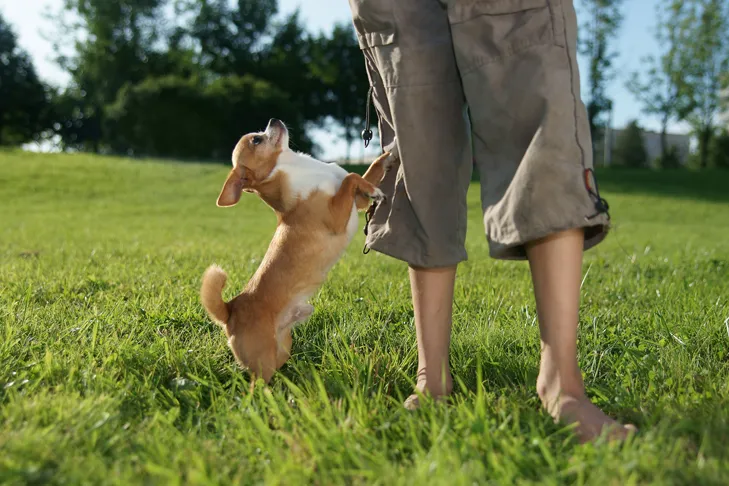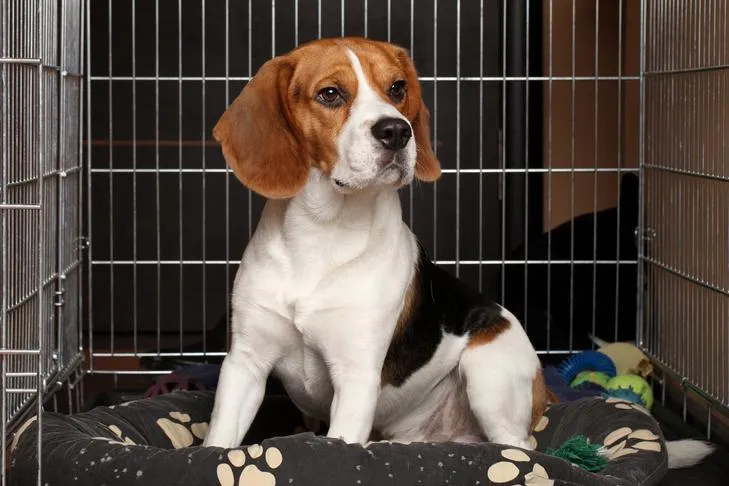Jumping up on people is a common and often instinctual behavior for dogs. For our canine companions, it’s a natural way to say hello, get closer to our faces, and, most importantly, secure our attention. However, while well-intentioned, this behavior can be annoying, inconvenient, and even dangerous, particularly for children, seniors, or those who might be easily knocked off balance. Muddy paws can also quickly soil clothes, making polite greetings difficult. Therefore, learning how to train your dog to not jump on people is crucial for ensuring safer, more pleasant interactions for everyone involved.
Teaching your dog appropriate greeting manners is not about suppressing their enthusiasm, but rather about redirecting it into acceptable forms. With consistent training and management, you can transform your dog’s boisterous greetings into calm and respectful interactions, whether at home or out in public. It’s an essential part of responsible dog ownership and helps foster a stronger bond built on mutual understanding. This guide will walk you through effective strategies to curb unwanted jumping and encourage polite hellos, ensuring your dog can confidently how to train your dog to walk nicely and greet others appropriately.
Understanding Why Dogs Jump
Dogs are masters at repeating behaviors that consistently earn them rewards. When it comes to jumping, the primary reward is often human attention. Even negative reactions, such as pushing your dog away, yelling, or inadvertently engaging in a “wrestling game” by grabbing their paws, still provide the attention your dog seeks. Family members, visitors, and even strangers can unknowingly reinforce this behavior, making it more challenging to stop.
To effectively teach your dog not to jump, you must eliminate the rewards associated with the behavior. This involves two key strategies: managing your dog’s environment to prevent them from practicing jumping in the first place, and actively teaching them an alternative, more appropriate greeting behavior. By consistently removing the reinforcement for jumping and providing clear guidance on what to do instead, you can successfully modify this common canine habit.
 A small dog enthusiastically jumping up on a person to greet them.
A small dog enthusiastically jumping up on a person to greet them.
Training Alternative Greeting Behaviors
Simply ignoring your dog when they jump might theoretically lead to the behavior stopping, as it’s no longer rewarded. However, relying solely on this approach can be frustrating for your dog and inconsistent, as not everyone will follow the same rules. It’s far more effective and humane to actively teach your dog an alternative way to greet people. This involves showing them what you want them to do, rather than just what not to do. For instance, teaching your dog to “sit” when greeting is a clearer and easier rule for them to understand than just “don’t jump.”
The choice of alternative greeting behavior is up to you. You might prefer that your dog simply keeps all four paws on the floor, or you might prefer them to sit or lie down politely when someone approaches. The key is consistency and positive reinforcement to help your dog understand the new rules. Teaching your dog polite greetings is also crucial when you are trying to address other public behavior issues like teaching your dog to not pull on leash during walks.
How to Train “Four on the Floor”
This method focuses on rewarding your dog for keeping all four paws on the ground during greetings, preempting any jumping behavior. The goal is to reward them before they even think about lifting off.
Here’s how to teach the “four on the floor” method:
- Prepare with a Leash: Have your dog on a leash and a friend or family member approach them calmly.
- Preemptive Treats: Before the person reaches your dog, toss several small, high-value treats directly onto the floor. This encourages your dog to keep their head down and all paws on the ground to eat.
- Greet While Eating: While your dog is busy eating the treats, have the person calmly pet and greet them.
- Disengage: Before your dog finishes eating, have the person gently back away.
- Repeat and Extend: After several repetitions, try extending the greeting slightly, continuing to toss treats onto the floor throughout the entire interaction.
- Fade the Treats: Once your dog consistently keeps all four feet on the ground, you can begin to introduce the greeting before placing the first treat. Gradually reduce the frequency of treats until the polite greeting itself (and the accompanying attention) becomes the primary reward.
The success of this technique hinges on your speed. You need to anticipate your dog’s jumping attempt and provide the treats before they can jump. If your dog does jump, immediately have the person turn and walk away, and stop feeding treats. Your dog will quickly learn that keeping four paws on the floor earns attention and treats, while jumping results in the attention disappearing.
 A Bull Terrier puppy sitting calmly in a yard, looking upwards.
A Bull Terrier puppy sitting calmly in a yard, looking upwards.
How to Train “Sit” for Greetings
Teaching your dog to sit politely for greetings is another excellent alternative. Similar to “four on the floor,” this method teaches your dog that a settled, sitting posture is what brings them positive attention. When they stand up, the attention ceases. This is particularly useful when you are also working on skills like how to train a dog to walk without pulling, reinforcing overall good manners.
Follow these steps to teach your dog to sit for greetings:
- Tether Your Dog: Securely tether your dog’s leash to a sturdy object like a doorknob or heavy furniture. This prevents them from physically jumping on you or guests.
- Practice Sit from a Distance: Stand a few feet away and ask your dog to “sit.” If they sit, calmly approach them. If they stand up before you reach them, turn and walk back to your starting point and ask for the “sit” again.
- Reward Stillness: If they remain sitting as you approach, gently praise and pet them. Continue greeting them as long as they stay in a sit. The moment they stand up, immediately turn and walk away, ending the interaction.
- Increase Excitement: As your dog becomes proficient at sitting calmly for your greetings, you can gradually make your approaches more energetic and exciting to challenge their impulse control.
- Generalize with Others: Once your dog reliably sits for your greetings, repeat these steps with friends and family members. This helps them generalize the behavior to different people and situations.
Remember, consistent practice of the “sit” command in various contexts is key. If your dog struggles with basic “sit” without distractions, it will be harder to apply it during exciting greetings. Integrating “sit” into daily routines – such as before going outside or receiving dinner – will solidify it as your dog’s polite way of asking for things, making “sit” for greetings much easier to teach. Your goal is for “sit” to become a default behavior, like a polite “please,” especially when working on behaviors such as how to stop dog barking when someone comes in.
 A beagle dog calmly sitting inside its open crate, demonstrating good manners.
A beagle dog calmly sitting inside its open crate, demonstrating good manners.
Preventing Jumping During Training
While you are actively training your dog in appropriate greeting behaviors, it’s crucial to manage their environment to prevent them from practicing the unwanted jumping behavior. Every time they jump and get a reward (even accidental attention), it reinforces the habit.
Effective management strategies include:
- Designated “Place” Cues: If your dog knows a strong “go to your place” cue, send them to their mat or crate whenever the doorbell rings or guests arrive. This keeps them safely out of the way until they can greet politely.
- Physical Barriers: Use dog gates at your entranceway to create a barrier between your dog and visitors. This prevents direct access and the opportunity to jump.
- Leash Control: Keep your dog on a leash when guests are present. This allows you to maintain control and prevent jumping by gently redirecting them or moving them away.
- Distraction Tactics: Keep engaging toys and treats near your front door. When a visitor arrives, you can toss a treat or toy away from the doorway to occupy your dog while your guest enters. Your guest can also use these rewards to reinforce appropriate greetings.
Preventing jumping can be particularly challenging when you’re walking your dog, as you cannot expect strangers to know or follow your training rules. Until your dog reliably offers polite greetings with friends and family, try to minimize interactions with strangers. Instead, use a “watch me” cue or squeak a toy to get your dog’s attention and lead them past the stranger without incident.
When your dog is ready to practice greeting people in public, inform others of your training procedure. Politely ask them to ignore your dog if they don’t follow the rules. This consistency, combined with management and training, will help your dog understand how to say hello politely, whether it’s at your front door or on the sidewalk, eventually making them a truly well-behaved companion, much like a how to train your dog to be a service dog.
Conclusion
Training your dog not to jump on people is a fundamental aspect of responsible dog ownership, enhancing safety and enjoyment for both your dog and everyone they meet. By understanding why dogs jump (often for attention) and consistently redirecting this natural exuberance into more appropriate behaviors like “four on the floor” or a polite “sit,” you empower your dog with better communication skills. Combining proactive training methods with effective management strategies, such as using leashes, gates, or distraction techniques, ensures that your dog doesn’t get to practice the unwanted behavior while they are learning.
Patience, consistency, and positive reinforcement are your most powerful tools in this journey. With dedication, your dog will learn that calm and polite greetings yield far more rewarding interactions than jumping, transforming them into a well-mannered companion ready for any social situation. Start today, and enjoy the benefits of a dog who knows how to greet everyone respectfully.
